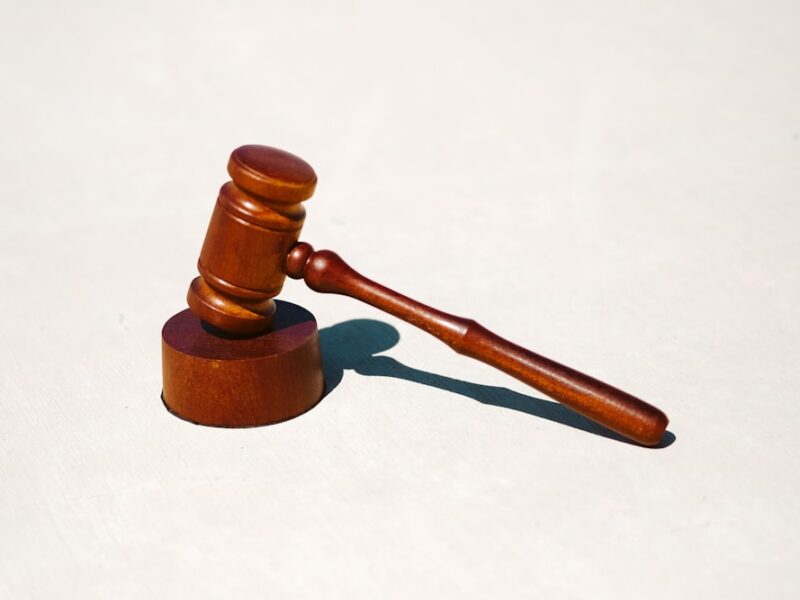Personal injury claims can arise from a wide range of situations, such as car accidents, slip and falls, medical malpractice, and workplace accidents. These claims allow individuals who have been injured due to someone else’s negligence or intentional actions to seek compensation for their damages. However, navigating the complexities of personal injury claims can be challenging without the right knowledge and guidance.
In order to understand personal injury claims, it is important to first grasp the concept of negligence. Negligence refers to the failure to exercise reasonable care, resulting in harm to another person. To successfully pursue a personal injury claim, you must be able to demonstrate that the other party owed you a duty of care, that they breached that duty, and that their breach directly caused your injuries.
It is also essential to be aware of the statute of limitations for personal injury claims. The statute of limitations sets a time limit within which you must file your claim. Failing to meet this deadline can result in the loss of your right to seek compensation. Therefore, it is crucial to consult with a personal injury lawyer as soon as possible after an accident to ensure that you protect your rights.
Common types of personal injury cases
Personal injury claims can encompass a wide range of accidents and incidents. Some of the most common types of personal injury cases include:
- Car accidents: Car accidents are a leading cause of personal injury claims. Whether you were a driver, passenger, or pedestrian involved in a car accident, you may be entitled to compensation for your injuries and damages.
- Slip and falls: Slip and fall accidents occur when someone slips, trips, or falls on someone else’s property due to hazardous conditions. These types of accidents often result in injuries such as broken bones, sprains, or head trauma.
- Medical malpractice: Medical malpractice claims arise when a healthcare professional fails to provide the expected standard of care, resulting in harm to the patient. These claims can include surgical errors, misdiagnosis, medication errors, and birth injuries.
- Workplace accidents: Workplace accidents can occur in any industry and can range from minor injuries to severe accidents resulting in long-term disabilities. It is important to understand your rights as an injured worker and seek legal advice to ensure you receive the compensation you deserve.
Steps to take after a personal injury accident
If you have been involved in a personal injury accident, there are several important steps you should take to protect your rights and strengthen your claim:
- Seek medical attention: Your health and well-being should be your top priority. Seek immediate medical attention for your injuries, even if they seem minor. Prompt medical documentation will not only ensure proper treatment but also serve as evidence of your injuries.
- Gather evidence: Collect as much evidence as possible to support your claim. This may include photographs of the accident scene, witness statements, medical records, and any other relevant documentation. The more evidence you have, the stronger your case will be.
- Report the accident: If the accident occurred in a public place or at work, report it to the appropriate authorities or your employer. This will create an official record of the incident, which can be crucial when filing a personal injury claim.
- Consult with a personal injury lawyer: It is highly recommended to seek legal advice from a personal injury lawyer as soon as possible. An experienced lawyer can guide you through the legal process, help you understand your rights, and negotiate with insurance companies on your behalf.
Working with a personal injury attorney
Hiring a personal injury attorney is a crucial step in navigating the complexities of a personal injury claim. Skilled Personal Injury Attorneys can provide you with the legal expertise and support you need to secure the compensation you deserve.
When choosing a personal injury lawyer, consider the following:
- Experience: Look for an attorney who specializes in personal injury cases and has extensive experience in handling claims similar to yours. An experienced attorney will have a deep understanding of the legal process and the tactics used by insurance companies.
- Reputation: Research the reputation of the attorney or law firm you are considering. Read reviews, testimonials, and ask for recommendations from trusted sources. A lawyer with a solid reputation is more likely to deliver favorable results.
- Communication: Effective communication is key when working with a personal injury lawyer. Choose a lawyer who is responsive, keeps you informed about the progress of your case, and takes the time to answer your questions and address your concerns.
- Contingency fee: Most personal injury lawyers work on a contingency fee basis, which means they only get paid if they win your case. This fee is usually a percentage of the compensation you receive. Make sure to discuss the fee arrangement with your lawyer before hiring them.
Factors that can affect the value of a personal injury claim
The value of a personal injury claim is determined by various factors. Understanding these factors can help you have realistic expectations and negotiate for fair compensation. Some of the key factors that can affect the value of a personal injury claim include:
- Extent of injuries: The severity and long-term effects of your injuries play a significant role in determining the value of your claim. Serious injuries that require extensive medical treatment, rehabilitation, and result in permanent disabilities generally lead to higher compensation.
- Medical expenses: The cost of medical treatment, including hospital bills, surgeries, medication, therapy, and ongoing care, is a crucial factor in calculating the value of your claim. Keep a record of all your medical expenses to ensure they are properly accounted for.
- Lost wages: If your injuries prevent you from working, you may be entitled to compensation for lost wages. This includes both the income you have already lost and any future earnings you will miss out on due to your injuries.
- Pain and suffering: Pain, suffering, and emotional distress caused by the accident and your injuries can also be factored into the value of your claim. These damages are more subjective and can vary based on the individual circumstances of your case.
Negotiating a settlement in a personal injury case
In many personal injury cases, the parties involved reach a settlement agreement before going to court. Settlement negotiations can be complex, and it is crucial to approach them with careful strategy and guidance from your personal injury lawyer. Here are some key steps in negotiating a settlement:
- Assessing the value of your claim: Work with your lawyer to determine the fair value of your claim. This involves evaluating your damages, considering the strength of your evidence, and assessing the potential risks and costs of going to trial.
- Demand letter: Your lawyer will draft a demand letter outlining your injuries, damages, and the compensation you are seeking. This letter serves as the starting point for negotiations and sets the tone for the discussions.
- Counteroffers and negotiations: The other party may respond with a counteroffer. Negotiations can go back and forth until both sides reach an agreement. Your lawyer will advocate for your best interests and advise you on whether to accept or reject offers.
- Settlement agreement: If both parties agree on a settlement amount, a formal settlement agreement will be drafted. It is crucial to review the agreement carefully with your lawyer before signing to ensure that all terms are fair and favorable to you.
Going to court for a personal injury claim
While most personal injury claims are resolved through settlements, some cases may require taking the matter to court. Going to court can be a lengthy and complex process, but it may be necessary to secure the compensation you deserve. Here is an overview of what to expect if your personal injury case goes to court:
- Filing a lawsuit: Your lawyer will file a lawsuit on your behalf, initiating the formal legal process. The lawsuit will outline the details of your claim, the parties involved, and the compensation you are seeking.
- Discovery phase: Both sides will engage in the discovery process, where they exchange information, gather evidence, and depose witnesses. This phase allows each party to build their case and evaluate the strengths and weaknesses of the opposing side.
- Pre-trial negotiations: Even during the court process, settlement negotiations can continue. The court may also require mediation or alternative dispute resolution methods to facilitate a settlement before the trial.
- Trial: If the case proceeds to trial, both sides will present their arguments, evidence, and witnesses to a judge or jury. The court will make a final decision based on the evidence presented and the applicable laws.
Conclusion
Navigating the complexities of personal injury claims can be overwhelming, but with the right knowledge and guidance, you can protect your rights and seek fair compensation for your injuries and damages. Remember to seek immediate medical attention, gather evidence, and consult with a personal injury lawyer to ensure you have the best chance of success.
By understanding the common types of personal injury cases, the steps to take after an accident, and the factors that can affect the value of your claim, you are better equipped to navigate the legal process. Whether your case is settled through negotiation or goes to court, having an experienced personal injury lawyer by your side can make all the difference in achieving a favorable outcome.




